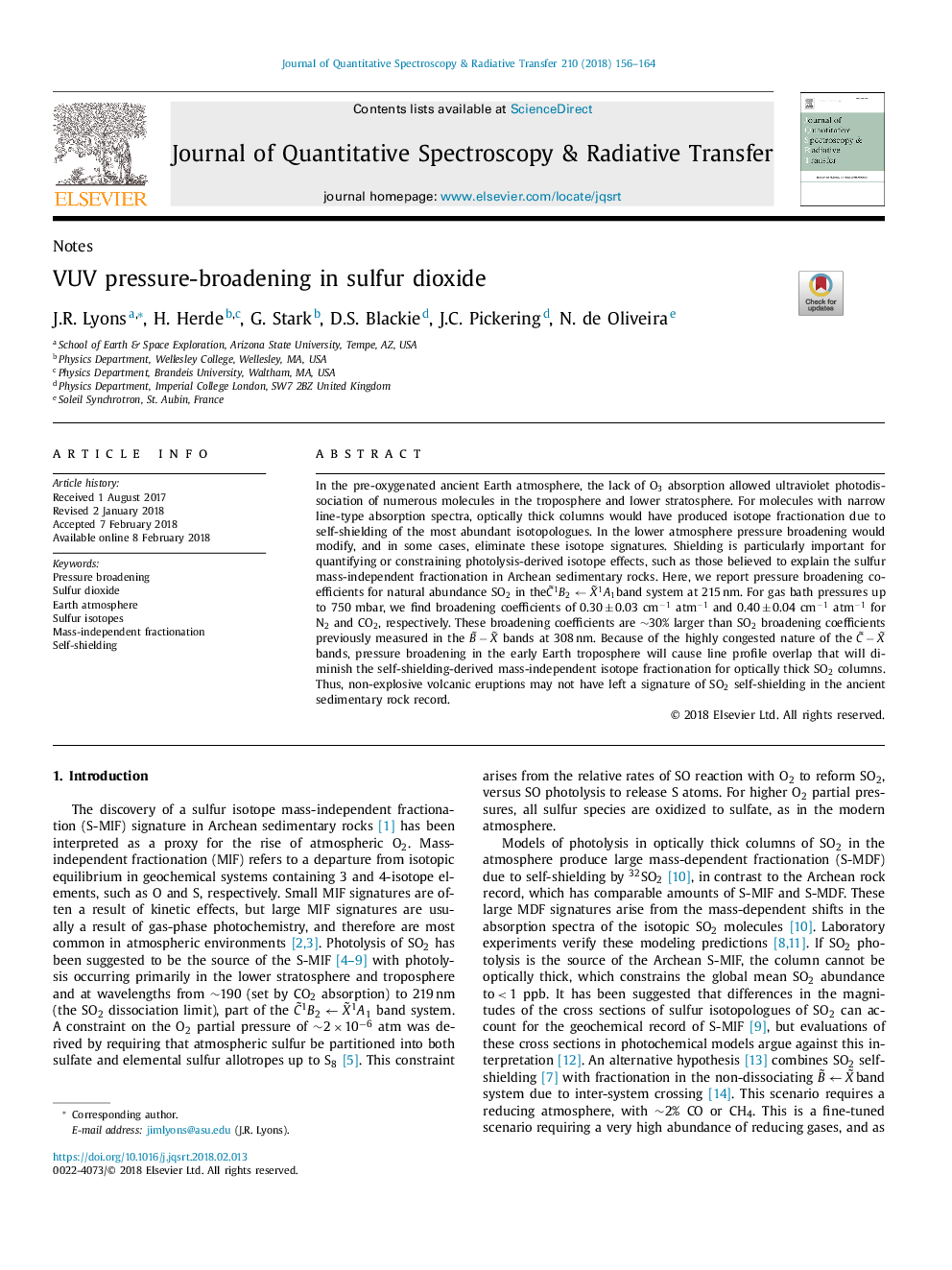| Article ID | Journal | Published Year | Pages | File Type |
|---|---|---|---|---|
| 7846060 | Journal of Quantitative Spectroscopy and Radiative Transfer | 2018 | 9 Pages |
Abstract
In the pre-oxygenated ancient Earth atmosphere, the lack of O3 absorption allowed ultraviolet photodissociation of numerous molecules in the troposphere and lower stratosphere. For molecules with narrow line-type absorption spectra, optically thick columns would have produced isotope fractionation due to self-shielding of the most abundant isotopologues. In the lower atmosphere pressure broadening would modify, and in some cases, eliminate these isotope signatures. Shielding is particularly important for quantifying or constraining photolysis-derived isotope effects, such as those believed to explain the sulfur mass-independent fractionation in Archean sedimentary rocks. Here, we report pressure broadening coefficients for natural abundance SO2 in theCË1B2âXË1A1band system at 215â¯nm. For gas bath pressures up to 750 mbar, we find broadening coefficients of 0.30â¯Â±â¯0.03 cmâ1 atmâ1 and 0.40â¯Â±â¯0.04 cmâ1 atmâ1 for N2 and CO2, respectively. These broadening coefficients are â¼30% larger than SO2 broadening coefficients previously measured in the BËâXË bands at 308â¯nm. Because of the highly congested nature of the CËâXË bands, pressure broadening in the early Earth troposphere will cause line profile overlap that will diminish the self-shielding-derived mass-independent isotope fractionation for optically thick SO2 columns. Thus, non-explosive volcanic eruptions may not have left a signature of SO2 self-shielding in the ancient sedimentary rock record.
Keywords
Related Topics
Physical Sciences and Engineering
Chemistry
Spectroscopy
Authors
J.R. Lyons, H. Herde, G. Stark, D.S. Blackie, J.C. Pickering, N. de Oliveira,
